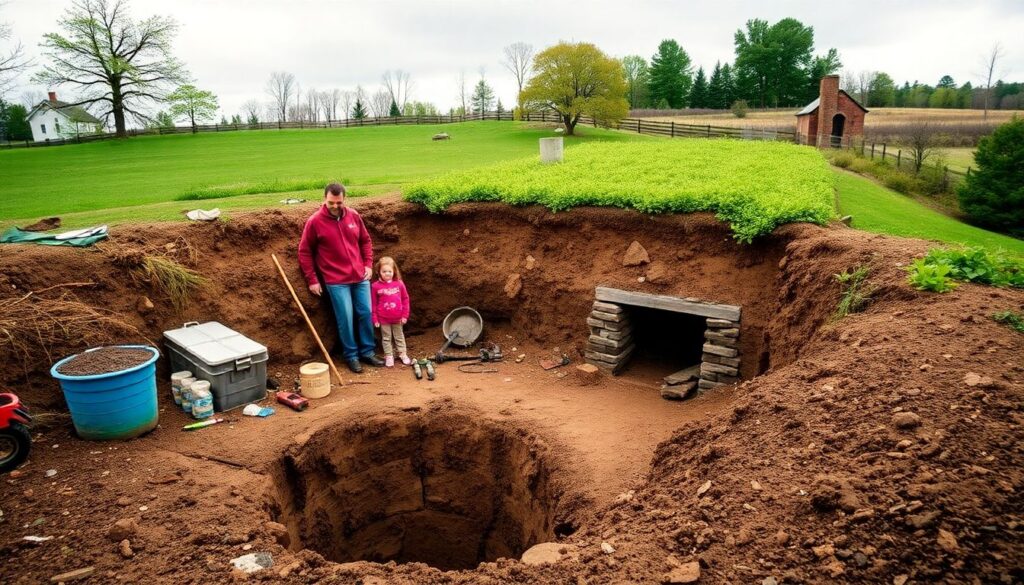Have you ever found yourself gazing at the night sky, wondering what it would be like to have a secret hideaway, a sanctuary untouched by the chaos above? Or perhaps you’ve seen the news and thought, ‘What if that happened here? Would I be prepared?’ Welcome to the world of underground bunkers, where safety, self-sufficiency, and a touch of James Bond meet. This is not just about building a DIY fortification; it’s about creating a survival shelter that could save your life and the lives of those you love. In this ultimate guide, we’re going to delve deep into the fascinating, sometimes daunting, but always intriguing world of underground bunkers. So, buckle up, grab your hard hat, and let’s start digging!
Did you know that the concept of underground bunkers dates back to ancient times? The earliest known underground shelters were built by the ancient Greeks and Romans to protect their cities from invading armies. Fast forward to the 20th century, and underground bunkers became a symbol of the Cold War, with nations racing to build the most secure, deepest, and most secretive shelters. Today, the idea of an underground bunker is no longer confined to governments and the super-rich. With the rise of prepper culture and an increased awareness of natural disasters, more and more people are considering building their own survival shelters.
But why should you build an underground bunker? The reasons are as varied as the people who build them. Some are preparing for natural disasters like earthquakes, hurricanes, or tornadoes. Others are worried about societal collapse, economic instability, or even a zombie apocalypse (hey, we don’t judge!). Whatever your reason, building an underground bunker is a significant undertaking, both in terms of time, money, and skill. But don’t let that deter you. With the right knowledge, planning, and a bit of elbow grease, you too can build a sanctuary that will weather any storm.
In this ultimate guide, we promise to take you through every step of the process, from choosing the perfect location to stocking your bunker with everything you’ll need to survive. We’ll discuss different bunker designs, from simple root cellars to high-tech underground homes. We’ll also delve into the legal aspects, the environmental impact, and the psychological aspects of living underground. So, whether you’re a seasoned prepper or a curious beginner, this guide is for you. By the end of it, you’ll have the knowledge and confidence to build your own underground bunker, a testament to your resourcefulness and resilience. Now, are you ready to start digging?
Fortify Your Future: A Comprehensive Journey into Underground Bunker Construction
Embark on an intriguing journey into the realm of underground bunker construction with ‘Fortify Your Future’. This comprehensive exploration delves into the art and science of creating subterranean sanctuaries, offering a unique blend of practical guidance and fascinating insights. From the initial planning stages to the final touches, we’ll guide you through the process of designing and building a secure, self-sustaining haven beneath the surface. Imagine transforming a barren plot of land into an impenetrable fortress, equipped with state-of-the-art technology, renewable energy sources, and advanced life support systems. Picture a world where the chaos above is replaced by the quiet hum of self-sufficiency below. This isn’t just about preparing for the worst; it’s about creating a better, more resilient future. So, grab your hard hat and join us as we venture underground, one shovel full at a time, to fortify your future.

Understanding the Need for an Underground Bunker
In today’s increasingly unpredictable world, the importance of underground bunkers has resurfaced, not just as a relic of Cold War paranoia, but as a practical solution to a myriad of potential threats. Natural disasters, such as earthquakes, hurricanes, and tsunamis, can strike with little to no warning, leaving communities devastated and infrastructure in ruins. Underground bunkers, designed to withstand such forces, can provide a safe haven during these catastrophic events.
However, the need for underground bunkers extends beyond natural disasters. Societal collapse, whether due to economic instability, political unrest, or pandemics, can lead to chaos and lawlessness. In such scenarios, having a secure, hidden space to retreat to can mean the difference between survival and becoming a statistic. This is not just about physical safety; it’s also about psychological well-being. Knowing that there’s a safe space to retreat to can provide a sense of security and peace of mind, helping individuals and families cope with the stress and anxiety that accompanies such situations.
Moreover, underground bunkers are not just about short-term survival. They can also serve as long-term survival solutions. Equipped with sustainable food and water sources, renewable energy systems, and advanced filtration systems, these bunkers can support life for extended periods. This is particularly relevant in the face of long-term threats like climate change, which could make certain areas of the world uninhabitable.
In essence, underground bunkers are not just about doomsday prep, but about being prepared for a wide range of potential threats. They are a testament to the human spirit’s resilience and our ability to adapt and innovate in the face of adversity. Whether it’s a natural disaster, societal collapse, or long-term survival situation, having an underground bunker can provide the safety and security needed to weather the storm and emerge stronger.

Choosing the Perfect Location for Your Bunker
Choosing the perfect location for your underground bunker is a critical decision that requires careful consideration of several key factors. After all, this will be your sanctuary in times of crisis, so it’s essential to get it right.
The first factor to consider is accessibility. You’ll want to ensure that you can reach your bunker quickly and easily, even in emergency situations. This means choosing a location that’s not too remote, with roads that are passable year-round. For instance, many successful bunker locations are found in rural areas with good road networks, like the ones near Bozeman, Montana, or in the Texas Hill Country.
Proximity to water sources is another crucial factor. Water is a vital resource, and having a reliable source nearby can make all the difference in a survival situation. Look for locations near rivers, lakes, or underground aquifers. However, be mindful of flood plains and areas prone to water shortages.
Soil type is also a significant consideration. You’ll want to choose a location with soil that’s easy to dig through, such as sandy loam or clay loam. Avoid areas with rocky or hard-packed soil, as these can make digging your bunker a challenging and expensive task. The successful bunker located in the loess soil of the Palouse region in Washington state is a testament to the importance of soil type.
Lastly, local regulations play a significant role in determining the feasibility of your bunker location. Some areas may have restrictions on underground construction, while others may require permits or inspections. Research local zoning laws, building codes, and environmental regulations to ensure your bunker project is legally sound. For example, the underground homes in the town of Coober Pedy, Australia, are a great example of successful bunker-like structures that comply with local regulations.
In conclusion, choosing the perfect location for your underground bunker involves a careful balance of accessibility, water sources, soil type, and local regulations. By considering these factors, you can find the ideal spot to build your sanctuary and ensure your safety and comfort in times of crisis.
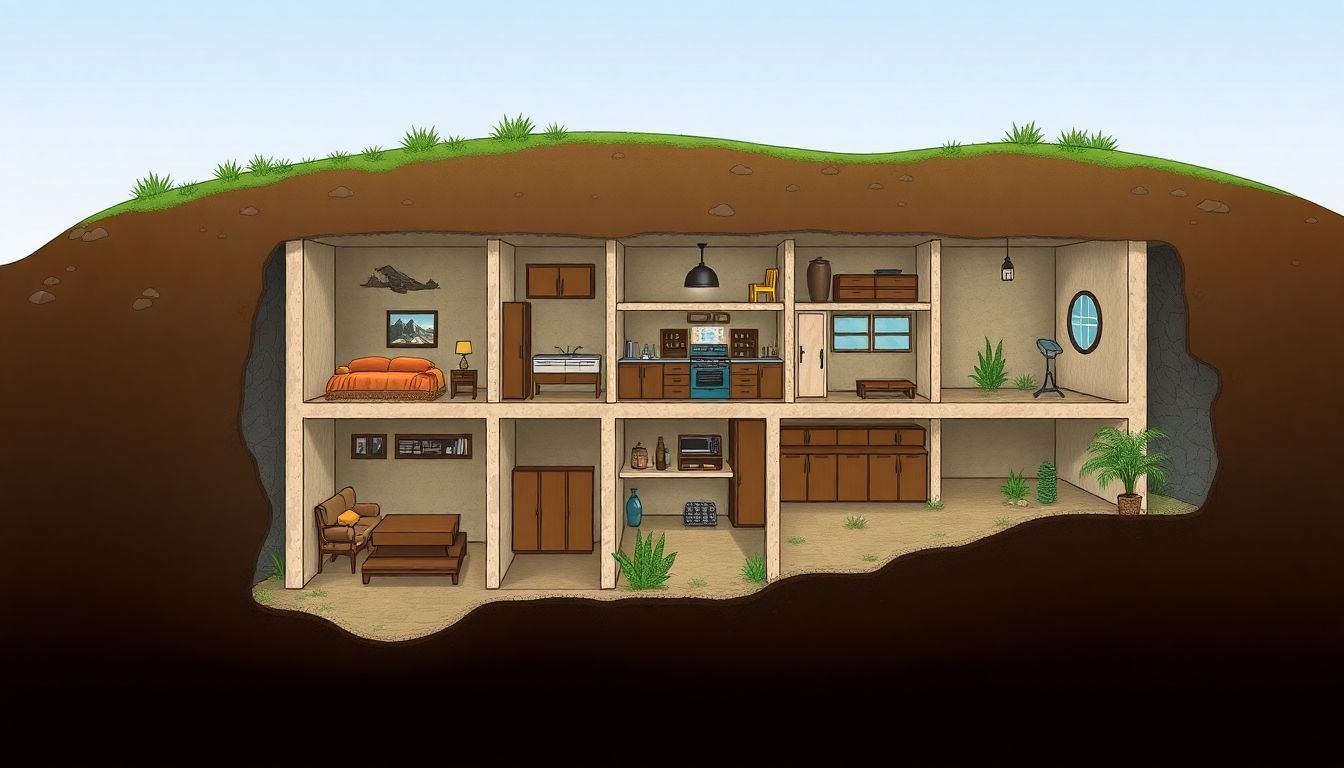
Designing Your Dream Bunker: Layout and Amenities
Designing your dream bunker is no longer just about survival; it’s about creating an underground haven that caters to your unique lifestyle and preferences. Let’s delve into the fascinating world of bunker design, exploring various layout options that range from simple, functional shelters to lavish, multi-level retreats.
At the core of any bunker design are its layout and amenities. The layout can be as simple as a single, multi-purpose room or as complex as a multi-level sanctuary with separate spaces for sleeping, dining, and recreation. Consider your needs and the number of occupants when deciding on the layout. A larger group might require separate living quarters, while a smaller family could make do with a single, well-designed space.
Essential amenities are the lifeblood of any bunker. Ventilation is paramount, ensuring a constant supply of fresh air. A well-designed ventilation system can be as simple as a passive system that relies on natural airflow or as complex as a mechanical system with air filters and heat exchangers.
Lighting is another crucial aspect. LED lights are energy-efficient and long-lasting, making them an excellent choice for underground spaces. Consider using motion sensors or timers to conserve energy.
Water and waste management systems are also vital. A rainwater harvesting system can provide a sustainable water source, while a septic tank or composting toilet can manage waste. Some advanced systems even treat and recycle water.
But what about the optional comforts that turn a bunker into a dream home? Entertainment and recreation areas can make all the difference in maintaining morale and mental well-being. A home theater, gaming room, or even a small gym can provide hours of enjoyment. For the green-thumbed, a hydroponic garden can provide fresh produce and a touch of nature.
In conclusion, designing your dream bunker is a journey that combines functionality with personal taste. Whether you’re a minimalist or a maximalist, there’s a bunker layout and set of amenities that can suit your needs. So, let your imagination run wild and create an underground haven that’s uniquely yours.
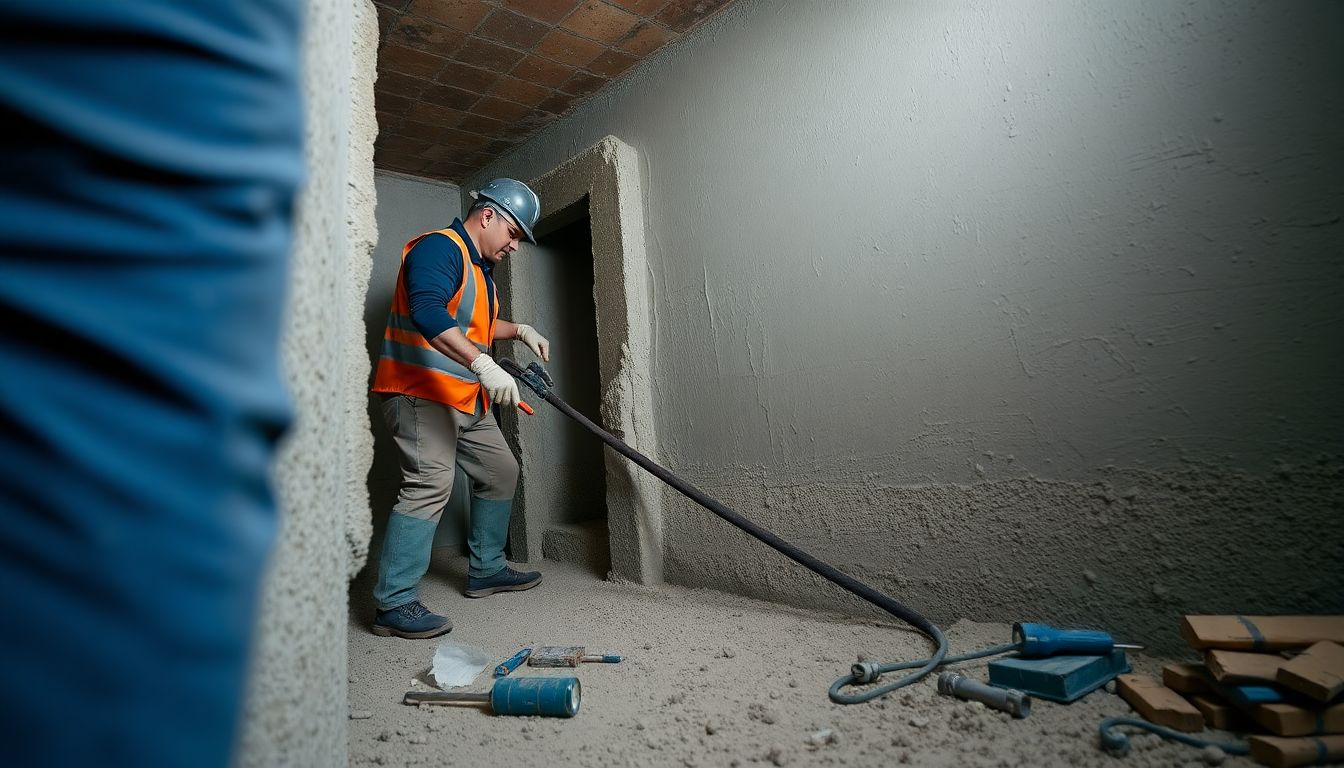
Materials and Construction Techniques
Underground bunker construction is a meticulous process that involves careful selection of materials and precise construction techniques. The primary goal is to create a secure, durable, and long-lasting structure that can withstand various environmental and external pressures. Let’s delve into the different materials used and the step-by-step construction process. The most common material used in underground bunker construction is concrete, renowned for its strength and durability. Reinforced with steel, it provides excellent protection against blast, fire, and environmental hazards. Steel is another primary material, often used for the bunker’s framework and doors due to its high strength-to-weight ratio. However, alternative materials are gaining traction, such as earth-packed tires, which offer cost-effectiveness and environmental sustainability, or inflatable structures, providing rapid deployment and easy relocation. The construction process begins with excavation. The site is carefully chosen, considering factors like soil stability, water table, and accessibility. The excavation process involves digging a hole large enough to accommodate the bunker and any additional features like entryways or living spaces. Safety precautions during excavation include proper shoring to prevent cave-ins and the use of personal protective equipment (PPE) for workers. Once the excavation is complete, the reinforcement process begins. For concrete bunkers, steel reinforcement bars are placed within the formwork to strengthen the structure. For steel bunkers, the framework is assembled and reinforced as per the design specifications. Alternative materials like earth-packed tires or inflatable structures are installed according to the manufacturer’s guidelines. After reinforcement, the bunker is constructed. For concrete bunkers, concrete is poured into the formwork, ensuring it reaches all corners and reinforcement bars. For steel bunkers, the framework is assembled and welded together. Alternative materials are installed or inflated as per their specific methods. Finally, the bunker is backfilled. The excavated soil is carefully placed around the bunker, ensuring it’s compacted properly to provide additional protection and stability. The backfilling process also helps to camouflage the bunker, making it less visible from the surface. Safety precautions during backfilling include gradual compaction to avoid structural damage and regular monitoring of the bunker’s integrity. The construction process concludes with the installation of any additional features like entryways, ventilation systems, or interior finishes. Regular inspections and maintenance are crucial to ensure the bunker’s longevity and functionality.
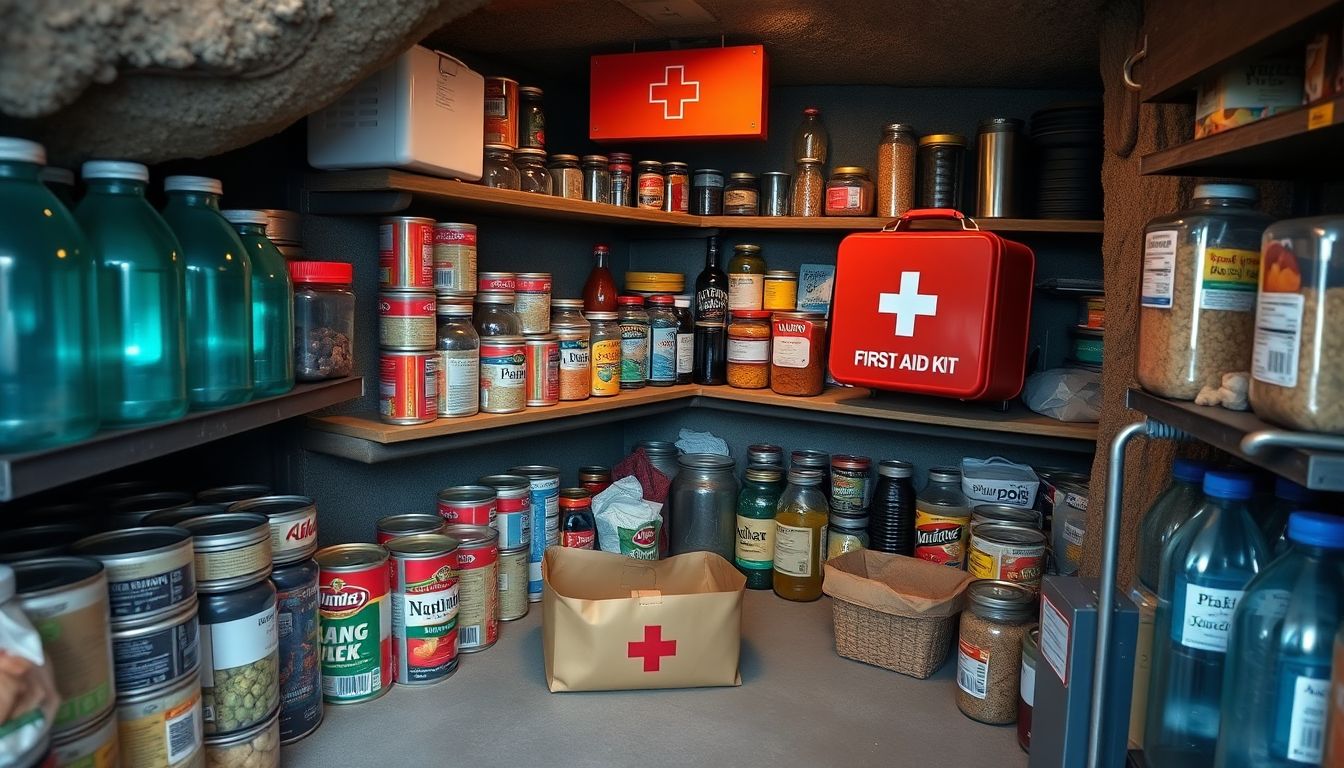
Stocking Up: Essential Supplies for Long-Term Survival
When preparing for long-term survival in an underground bunker, it’s crucial to stock up on essential supplies to ensure your safety and comfort. The most vital resources to consider are food, water, and medical supplies, along with other essential items that will sustain you during your time underground.
The first step in stocking up is to ensure you have an adequate supply of food. Aim for a variety of non-perishable, high-energy, and nutritious items that require minimal preparation. Canned goods, dried fruits, nuts, and grains are all excellent choices. Remember to consider any dietary restrictions or preferences when selecting your food supplies.
Water is another critical resource that must be carefully managed. Store as much clean water as possible, and consider investing in a water purification system to ensure a continuous supply. Rotate your water supply regularly to prevent contamination and ensure freshness.
Medical supplies are equally important for maintaining your health and well-being during your time in the bunker. Assemble a comprehensive first-aid kit that includes bandages, antiseptics, pain relievers, and any prescription medications you may need. Additionally, consider stocking up on vitamins and supplements to support your overall health.
Other essential items to include in your stockpile are lighting sources, such as flashlights and lanterns, along with extra batteries. Communication devices, like walkie-talkies or satellite phones, can also be invaluable for staying connected with the outside world. Don’t forget to include entertainment items, such as books, games, and musical instruments, to help pass the time and maintain your morale.
To maintain your stockpile, it’s essential to rotate your supplies regularly. This involves using up older items and replacing them with new ones to ensure freshness and prevent waste. Create a rotation schedule that allows you to use and replace items at regular intervals. For example, you might use up your oldest canned goods every six months and replace them with new ones. This will help you maintain a balanced and well-stocked supply of essential items for long-term survival.
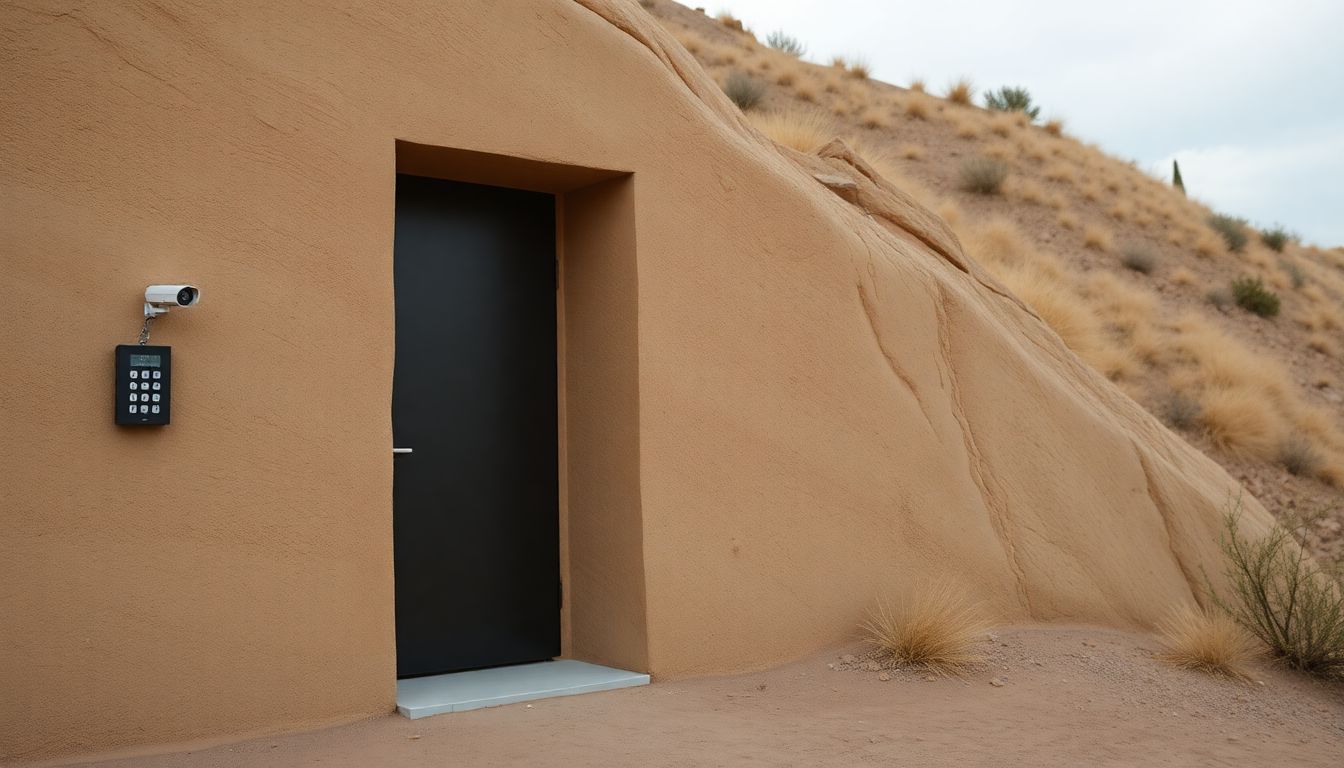
Security Measures: Protecting Your Bunker and Family
When it comes to safeguarding your underground bunker and your family, a proactive approach to security is paramount. Your bunker, a sanctuary designed to protect you from the harshest of circumstances, must be equally safeguarded from potential threats. The first line of defense is often the most overlooked
- the entrance. Reinforced steel doors, equipped with advanced locking mechanisms and reinforced frames, can significantly enhance your bunker’s security. Consider installing a door that is not only robust but also designed to blend in with the surrounding environment, making it less conspicuous to potential intruders.
Hidden entrances are another effective strategy. Disguising your bunker’s entrance as a mundane feature, such as a rock formation or a seemingly innocuous shed, can help maintain a low profile. This not only adds an extra layer of security but also ensures that your bunker remains unnoticed by prying eyes.
Advanced alarm systems are a must-have in today’s world. Motion sensors, infrared detectors, and even facial recognition systems can be integrated into your bunker’s security network. These systems should be connected to a silent alarm that alerts you and your family to any unauthorized entry, without drawing attention from outside.
However, technology alone is not enough. Maintaining a low profile is crucial. This involves minimizing any signs of life from your bunker. Limit the use of lights, especially at night, and ensure that any waste generated is disposed of discreetly. The less attention your bunker draws, the safer it will be. Remember, the goal is not to flaunt your preparedness but to protect it.
In conclusion, protecting your bunker and your family involves a combination of robust physical security measures and a low-profile approach. By reinforcing your entrance, hiding your bunker’s location, and maintaining a discreet lifestyle, you can significantly enhance your security and ensure that your bunker remains a safe haven.
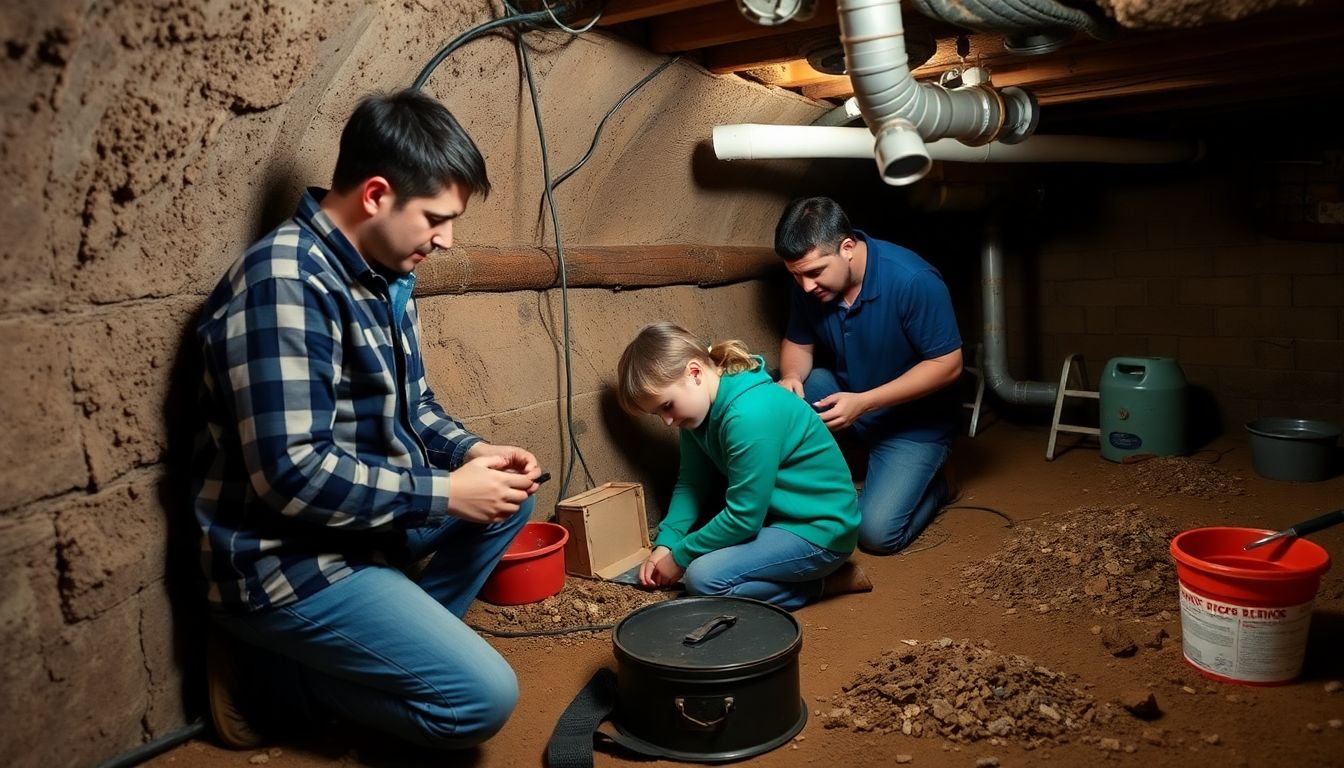
Maintaining and Upgrading Your Underground Bunker
Maintaining and upgrading your underground bunker is not just a matter of ensuring your safety, but also a testament to your preparedness and foresight. Regular inspections are the backbone of this process, allowing you to catch potential issues early and prevent them from becoming major problems. Remember, a bunker is only as good as its weakest point, so it’s crucial to inspect every aspect, from the structural integrity of the walls to the functionality of your life support systems.
Repairs should be carried out promptly and with the utmost care. This is not the time to cut corners or use substandard materials. Your bunker is your sanctuary in times of crisis, and it deserves the best care you can provide. Always have a stock of spare parts and materials on hand to ensure you’re prepared for any eventuality.
Upgrading your bunker is not just about adding more comforts, but also about staying up-to-date with the latest technologies and best practices in underground shelter construction. This could mean anything from installing a more efficient air filtration system to incorporating renewable energy sources. The world of underground bunkers is constantly evolving, and it’s important to stay informed about these advancements.
Here are some steps to help you maintain and upgrade your underground bunker:
- Conduct regular inspections, at least once a year, and more frequently if your bunker is in a region prone to natural disasters or extreme weather conditions.
- Keep a detailed record of all repairs and upgrades. This will help you track trends and anticipate future needs.
- Stay informed about new technologies and best practices in underground shelter construction. Attend workshops, read industry publications, and network with other bunker owners.
- Consider hiring a professional to conduct a thorough inspection and provide recommendations for upgrades. Their expertise can be invaluable.
Remember, maintaining and upgrading your underground bunker is an ongoing process. It’s not just about preparing for a crisis, but also about ensuring your peace of mind in the present. So, roll up your sleeves, grab your hard hat, and let’s get started!
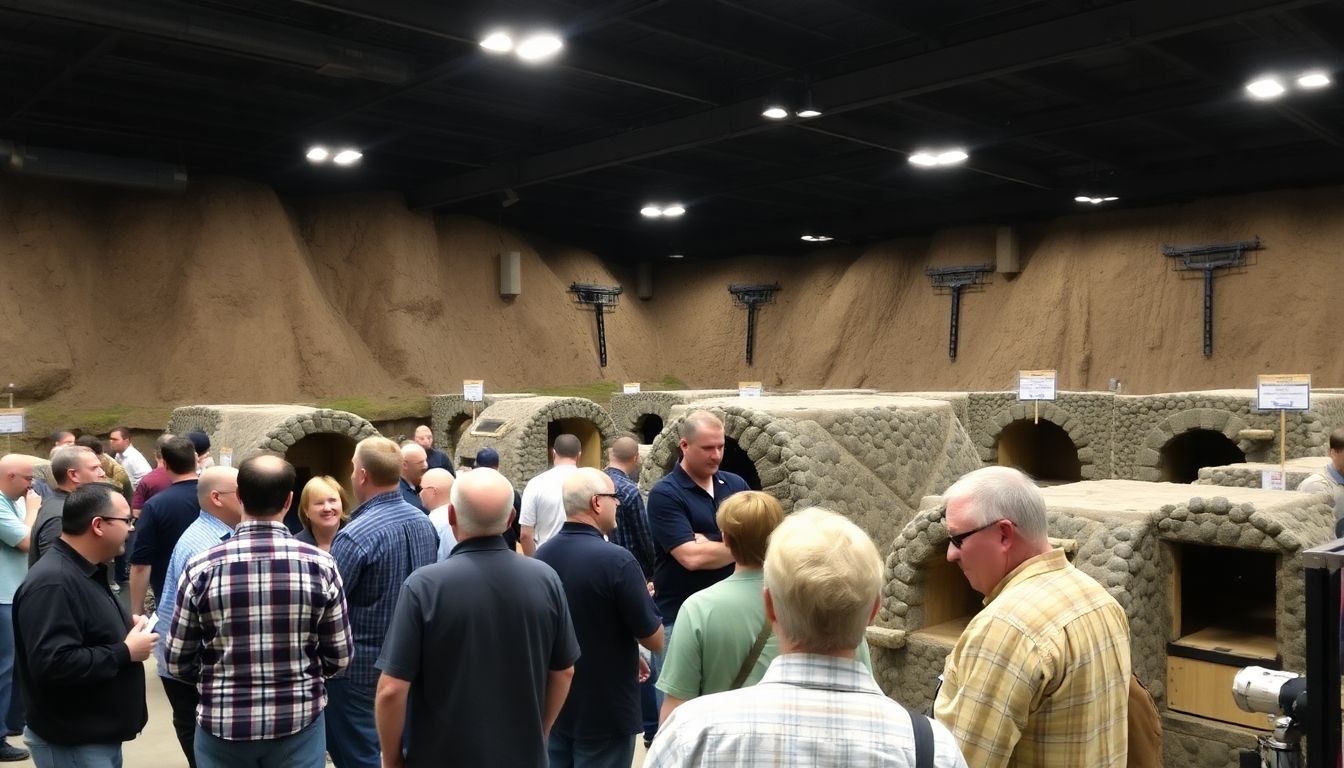
Community and Support: Connecting with Like-Minded Individuals
Embarking on the journey of underground bunker construction and survival preparedness can sometimes feel like a solitary path, but it doesn’t have to be. Building a community of like-minded individuals can bring about a myriad of benefits, transforming your experience from a solo endeavor to a collaborative and supportive one. Let’s delve into the advantages of connecting with others who share your passion and how you can foster these connections. Firstly, knowledge sharing is a powerful tool that can significantly enhance your preparedness journey. By joining online forums dedicated to underground bunkers and survivalism, you gain access to a wealth of information from experienced individuals who have already navigated the path you’re on. These platforms, such as Reddit’s r/UndergroundBunker or Survivalist Boards, allow you to ask questions, share your experiences, and learn from others’ successes and challenges. This collective wisdom can help you make informed decisions, avoid common pitfalls, and ultimately, build a more effective and efficient bunker. Secondly, local groups provide an opportunity to connect with individuals in your area who share your interests. Meeting face-to-face allows for a deeper level of interaction and collaboration. You can organize group purchases to save on supplies, share resources, and even plan joint training exercises or workshops. Websites like Meetup.com can help you find or start local groups focused on survival preparedness and underground bunkers. Additionally, attending events such as survival expos, preparedness fairs, and workshops can provide valuable networking opportunities. Lastly, gaining support from a community can offer emotional and psychological benefits that are often overlooked. Preparing for uncertain times can sometimes feel overwhelming, and having a support system in place can help alleviate stress and anxiety. By connecting with others, you can share your fears, celebrate your victories, and gain encouragement when you need it most. This sense of camaraderie can make your journey more enjoyable and less daunting. In conclusion, building a community of like-minded individuals around your interest in underground bunkers and survival preparedness can bring numerous benefits, from knowledge sharing and collaboration to emotional support. So, don’t hesitate to reach out, engage in online forums, join local groups, and attend events. You’ll not only enrich your own journey but also contribute to the growth and strength of the community as a whole.
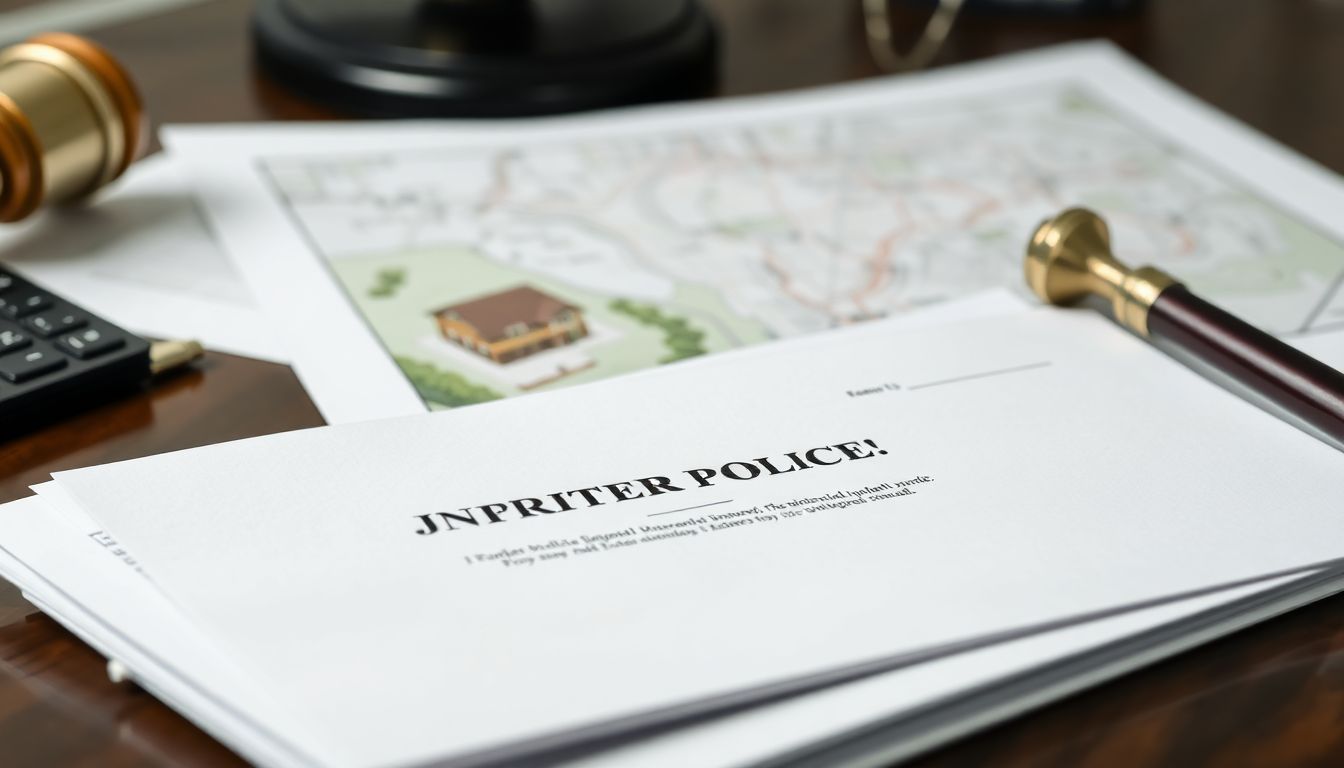
Legal Considerations and Insurance for Underground Bunkers
Embarking on the journey to own and maintain an underground bunker, a sanctuary for safety and security, comes with a myriad of legal considerations and insurance requirements. Let’s delve into the intricacies of this fascinating topic, ensuring your investment is protected and your family’s safety is paramount.
Firstly, it’s crucial to understand the legal landscape surrounding underground bunkers. This involves navigating local regulations, zoning laws, and building codes. Each jurisdiction has its unique set of rules, so it’s essential to consult with local authorities or a legal professional. For instance, some areas may require permits for construction, while others might have restrictions on the size, depth, or purpose of the bunker.
Zoning laws can also pose challenges. Residential zones may not permit the construction of bunkers, while agricultural or commercial zones might have different regulations. Building codes, on the other hand, ensure the structure is safe and habitable. They may dictate the materials used, the strength of the structure, and the inclusion of safety features like emergency exits and ventilation systems.
Now, let’s turn our attention to insurance. Adequate coverage is not just a smart move; it’s often a legal requirement. Here are some key aspects to consider:
- Liability Coverage: This protects you if someone is injured on your property, including in or around your bunker.
- Property Damage Coverage: This covers damage to your bunker from events like fire, flooding, or earthquakes.
- Contents Coverage: If your bunker is stocked with supplies, this coverage protects those items from damage or theft.
- Flood Insurance: If your bunker is in a flood-prone area, this is often a requirement.
Remember, insurance policies can vary widely, so it’s important to read the fine print and understand what’s covered and what’s not.
Lastly, consider the peace of mind that comes with knowing you’re prepared for the unexpected. Owning an underground bunker is a significant investment, but with the right legal knowledge and insurance coverage, you can ensure it’s a safe haven for you and your family.
FAQ
Why should I consider building an underground bunker or survival shelter?
What are the key factors to consider when choosing a location for my bunker?
- Accessibility: Ensure the site is easily accessible for construction and future use.
- Stability: Choose a location with stable soil and minimal risk of landslides or sinkholes.
- Water sources: Proximity to a reliable water source is crucial for survival.
- Elevation: Higher elevations can provide better protection from flooding and other hazards.
- Proximity to hazards: Avoid areas prone to specific hazards like earthquakes, tornadoes, or wildfires.
What are the basic components of a DIY fortification plan?
- Entrance and exit strategies: Plan for multiple entry and exit points to ensure safety and accessibility.
- Structural design: Consider the size, layout, and materials for the bunker’s structure, ensuring it can withstand various hazards.
- Ventilation and air filtration: Implement a system to provide fresh air and filter out contaminants.
- Water and sanitation: Plan for water collection, storage, and waste management systems.
- Power and lighting: Incorporate renewable energy sources and backup power options for lighting and essential appliances.
- Food and supplies: Stockpile non-perishable food, medical supplies, and other essential items.
What materials are best suited for constructing an underground bunker?
- Concrete: Durable, strong, and resistant to most hazards, but can be expensive and time-consuming to construct.
- Steel: Strong and versatile, but susceptible to corrosion and may require additional protection.
- Wood: Inexpensive and easy to work with, but less durable and more susceptible to rot, pests, and fire.
- Earth-packed tires (EPT): Inexpensive, durable, and can provide good insulation, but may not be suitable for all climates and can be labor-intensive to construct.
How can I ensure proper ventilation and air filtration in my bunker?
- Passive ventilation: Design your bunker with intake and exhaust vents to create a natural airflow using temperature and pressure differences.
- Active ventilation: Implement fans or blowers to force air through the bunker, ensuring a constant supply of fresh air.
- Air filtration: Use HEPA filters or activated carbon filters to remove contaminants, allergens, and odors from the air. Regularly replace or clean filters to maintain their effectiveness.
- Positive pressure: Maintain a positive pressure inside the bunker to prevent external contaminants from entering.
What are some creative ways to incorporate renewable energy sources in my bunker?
- Solar power: Install solar panels on the surface, connected to batteries and inverters to provide electricity for your bunker.
- Wind turbines: If the location allows, install a small wind turbine to generate electricity.
- Hydropower: If a water source is nearby, harness the power of moving water with a micro-hydro turbine.
- Geothermal energy: Utilize the earth’s natural heat to provide heating and cooling for your bunker.
- Composting toilets: Convert human waste into fertilizer, reducing the need for external resources and generating heat in the process.
How can I maintain a sense of normalcy and mental well-being while living in an underground bunker?
- Design a comfortable living space: Incorporate personal touches, such as photos, artwork, and furniture, to make the bunker feel like home.
- Establish routines: Create daily routines and schedules to maintain a sense of normalcy and purpose.
- Stay connected: If possible, maintain communication with the outside world through a shortwave radio, satellite phone, or other communication devices.
- Engage in hobbies and activities: Bring books, games, musical instruments, and other entertainment options to keep your mind active and engaged.
- Exercise and maintain physical health: Incorporate physical activities into your daily routine to maintain both physical and mental well-being.



